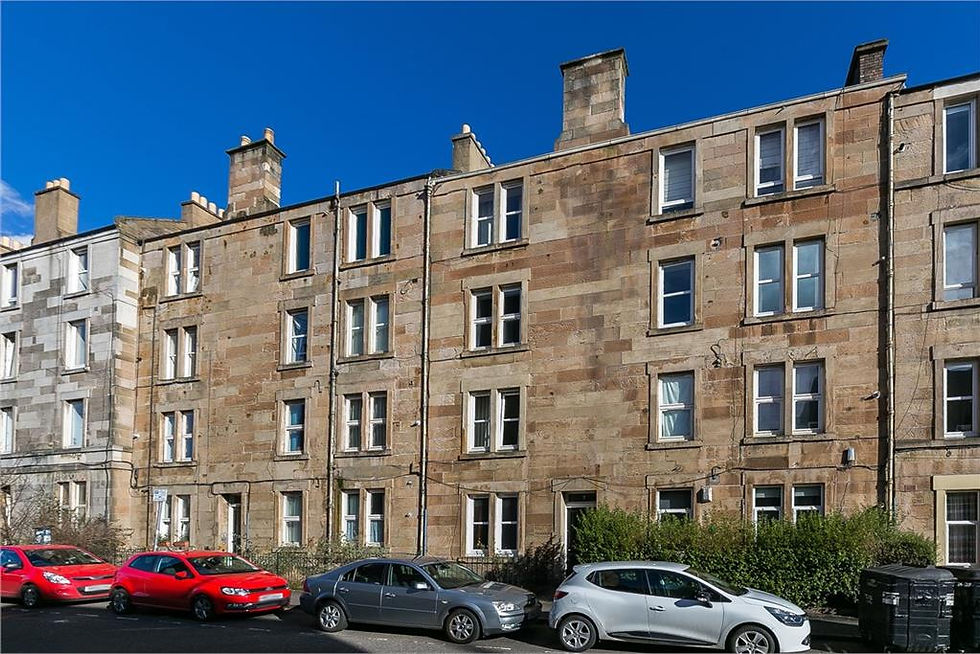Why Cheap “Deals” Aren’t Often Sensible Investments
- davidwhitmey
- Dec 14, 2022
- 6 min read

This piece may not be popular with some of our peers, but I know too many close friends and colleagues who still own property that they bought around 2008-2012 as exclusive - too good to be true - “deals” - properties that are still unsellable/un-rentable or even in negative equity some 14 years later. The purpose of this post is to provide context behind this type of investment strategy, rather than to discredit it.
It is December 2022 and ’all change’ in the UK property market. Investments purchased over the last few years that didn’t consider factors like location and demographic or resilience against rising interest rates and lack of affordability may well be just about to be ‘found out’. A rapidly rising market forgives a multitude of sins. Even the most neglected properties or areas will ride on the wave of rising prices. But 2023 is a new reality.
Over the past 2 years of growth the caption ‘below market value’ has been the 'holy grail' for investors. Properties sold at cut prices offer an accessible route to get onto the property market and build a vast portfolio seemingly at an accelerated rate. But, considering the past 2 years, in a rising market where often every house sells for more than the last you have to ask the question - why then sell at a reduction off-market and not go to market in order to secure the best price? Is the property un-mortgageable? Has it failed to sell on the market and if so, then why? Is there a lack of market for that particular type of property?
There is no doubt, due to the rapid interest rate rises and lack of affordability the property market is going to be heavily affected. Indeed we will likely see a justified return of below market value properties but its important to ask - if it seems too good to be true, is it true?
Please don’t misunderstand, if your strategy is solely yield based and the value of the asset is not as important to you then this is a moot point (as long as there is empirical data to support strong rental performance). But if you have an exit strategy, or rely on the long term capital appreciation of a property to justify an investment then there’s questionable value in an asset that makes you £10,000 in year one, but loses £10,000 in value in year 2. Or one that earns you a double digit yield, but in hand stagnates or even depreciates in value. Or worse, lies empty?
Cut price properties sound wonderful and the prospect of being able to amass 10 flats for less than 500k is very tempting yet it is arguably more of a vanity exercise rather than sensible investment strategy. The locals in the pub might be impressed but in truth one good or two properties in solid growth areas with a good yield may end up being a stronger prospect over the mid-long term than 10 properties in more deprived areas - particularly in a recession.
The argument traditionally is that yields can be much higher in areas where property values are low. But low priced properties often happen to be in more deprived areas that are crucially more exposed to factors such as unemployment and when pressure tested much like the market conditions we are now entering. If unemployment increases as expected over the next 2 years, rental arrears will typically increase substantially. Following the financial crisis in 2008 The UK tenant arrears figures for tenants in 'severe' arrears increased by 18% every year from 2008 to 2012. By 2012, UK unemployment was at 7.9%. In the final quarter of 2011, 24,966 tenants were facing eviction notices, which was an 11% increase from the previous years figure of 22,558. In the medium term, investors will no longer get away with moving forward with 'rose tinted glasses', riding on the rising market.
Consider the following example from our previous blog, “A time of change in the UK Property Market”. Greater Glasgow and the Scottish Central Belt traditionally outperform cities like Edinburgh when it comes to rental yield (if not capital appreciation). Yet in the 10 years following the 2008 financial crisis the lack of growth in Industrialised cities and more deprived areas is well demonstrated by the Scottish example in the data below. (Note that Midlothian encompasses Edinburgh and surrounding regions whilst East Renfrewshire, North/east Ayrshire, West Dumbartonshire and Inverclyde form Greater Glasgow and surrounding area).
It does not make easy reading for those who invested with a growth strategy in Scotland, out-with the Greater Edinburgh area, immediately following the downturn of 2008. The same downturn was seen in the industrialised cities and semi-rural areas south of the border, with cities and towns such as London, Cambridge, Oxford and St Albans showing their strength as affluent, in demand locations, much like Edinburgh's example.
Solid house price growth, highly educated residents and predicted population expansion ranked Edinburgh top of the 'UK residential investment opportunities' (above previous top performers like London, Oxford and Cambridge) in the 2022 Colliers list. Edinburgh stands as a front runner for stability through the coming years of limited growth due to its standing as best UK city for business outside London in 2022, a world beating tourist economy and a student demographic made up of 12% of the City's population.

The “Deal” Sourcer model

Pre-packaged, ‘below market value’ property sales or “deal sourcing” has become a viral sensation of social media, driven by charismatic personalities who own expensive sports cars and travel the world whilst their portfolios earn them a passive income. Truthfully this indeed has been a successful strategy for some savvy clever trailblazers and we take our hats off to them.
It is sold behind an image of success. The “If I can do it anyone can” tag-line. But ‘deal sourcing’ as its virally become known, is very much a numbers game for those who sell these ‘deals’. Quantity over quality. And crucially - monetise every aspect. But as new players replace the original trailblazers, “deals’ are more frequently rarely substantiated with convincing data. And dare we say it, the players reliant in some cases on some poorly conceived, YouTube style tutorial property education.
Rightly the model emphasises helping desperate sellers, rather than exploiting them. I like this philosophy. But crucially for the BUYER, a "deal" doesn’t automatically equal a ‘GOOD INVESTMENT'. It is no coincidence that a great majority of these ‘deals’ will be in less well-performing areas. It’s also likely many of these properties will need to be sold as ‘deals’ at the end of their investment lifespan.
There is no doubt that this economies-of-scale business model can earn the sourcers (or 'agents') a lot of money, but what is the outcome for the investors who are buying these "deals"?
Of course there are exceptions to the rule. Genuinely great opportunities exist through these channels. As do some impressive people. But the key is to look behind the misleading semantics of the tag line "deal".
Advice for investors
If you do decide to buy a pre-packaged “deal” - ask for data. Don't just accept statements like “good rental area”. Zoopla estimates are not data, nor is a scan of rental prices to see what agents are marketing at. We need to know data like how many weeks similar properties stay on the market for - both for rental and resale. What percentage below market value did neighbouring properties sell for? In what condition? Whats the value in a 20% reduction on market value when in the next void period, the property stays unrented for 5 months? Yes, tenanted property is convenient but tenants seldom stay forever. What if you need to sell the property quickly again? Are you relying on a 'flip' strategy that assumes that the property is any more sellable after renovation? The conditions will become more and more challenging. The game just became much less forgiving.
Consider your investment strategy carefully. Be clear on your priorities. Factor the risks that the next 10 years will present into your equations. Control as much as you can by investing where conditions are most stable. Use past financial downturns as a benchmark. Indeed no scenario is exactly the same as the past but certain trends and conditions repeat themselves.
At Property Bee we are building our own portfolio alongside those of our clients.
We have a 'stick to what you know' approach based on the unique financial conditions that a city like Edinburgh presents. Buy close to or under market value in locations (mostly but not always) close to the city centre with the strongest rental demographic and capital appreciation potential. This this isn't a 'get rich quick' strategy. And we wont present our clients anything that we wouldn't consider for ourselves.
Good solid investments without the instagram filters and thumbs up emojis.






Comments